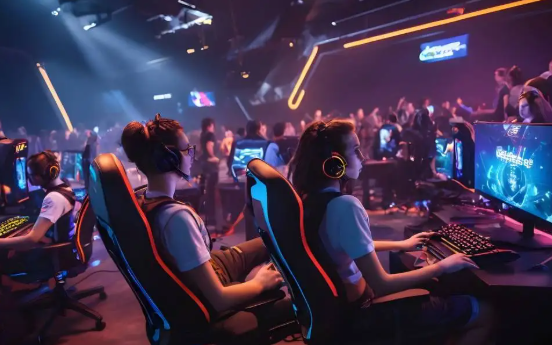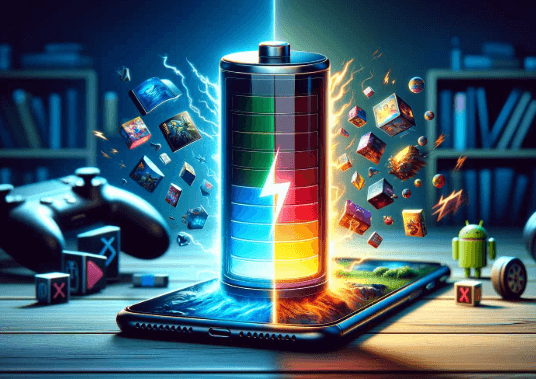Esports: The Rise of Competitive Gaming and Its Global Influence

In recent years, esports has transitioned from a niche hobby to a global phenomenon, with millions of players, fans, and even entire industries dedicated to the competitive gaming world. What once began as informal gaming competitions has blossomed into one of the most influential and lucrative segments of the entertainment industry. Esports is not only reshaping how we view video games, but it’s also altering the landscape of sports, entertainment, and digital culture.
This article explores the rise of esports, its impact on global culture, and the reasons behind its explosive growth. We will examine the economic, social, and cultural forces that have propelled esports to its current status and look ahead to its future.
1. Introduction: Understanding Esports
Defining Esports: A Global Phenomenon
Esports, short for “electronic sports,” refers to the competitive side of video gaming, where professional players or teams compete in organized tournaments or leagues. While traditional sports involve physical exertion, esports is driven by cognitive skills, teamwork, and reaction time. Games like League of Legends, Dota 2, Counter-Strike: Global Offensive, and Fortnite have become household names, attracting millions of players and viewers worldwide.
See also: Understanding Game Mechanics: The Heart of Interactive Gaming
The Key Pillars of Esports
At its core, esports is built on three essential pillars:
- Competition: The competitive aspect, where players or teams vie for victory in structured formats.
- Entertainment: Spectators enjoy the experience through live streaming platforms and tournaments.
- Community: Esports fosters a global community of gamers, fans, sponsors, and influencers.
2. The Origins of Competitive Gaming
The Early Days of Gaming Competitions
Competitive gaming can trace its roots back to the late 20th century, with informal LAN (Local Area Network) parties and early tournaments like the 1990 Nintendo World Championships and QuakeCon in 1996. These events marked the beginning of organized video game competitions but remained largely regional.
From LAN Parties to Global Tournaments
The early 2000s saw the emergence of larger-scale events, such as World Cyber Games and DreamHack, which helped lay the groundwork for modern esports. These tournaments attracted global audiences and began broadcasting through nascent streaming platforms like YouTube, further accelerating the growth of competitive gaming.
3. The Explosion of Esports: A Global Movement
The Role of Streaming Platforms (Twitch, YouTube)
A major catalyst for esports’ global rise has been streaming platforms like Twitch and YouTube Gaming. These platforms allowed gamers to broadcast their play in real-time, offering an unprecedented level of accessibility to viewers. With millions of users tuning into live streams, the esports ecosystem expanded rapidly, creating a global community of fans and players.
Growth of Professional Leagues and Tournaments
Esports events have grown into multimillion-dollar tournaments, with games like League of Legends and Dota 2 offering prize pools that rival traditional sports competitions. Leagues like the Overwatch League and Call of Duty League operate much like traditional sports leagues, complete with franchise systems, regional teams, and year-round seasons.
4. Esports and Its Economic Impact
The Esports Industry: Size and Scope
The esports industry is projected to surpass $1.5 billion in revenue by 2024. This includes revenues from ticket sales, sponsorship deals, advertising, merchandise, and media rights. In many countries, esports has become an established part of the entertainment ecosystem, attracting investment from tech giants, media companies, and even traditional sports franchises.
Sponsorship, Advertising, and Revenue Streams
Sponsorship and advertising make up the majority of esports revenue. Companies from all industries are looking to tap into the vast, engaged audiences that esports provides. Tech companies, like Intel and NVIDIA, are particularly invested in esports, sponsoring tournaments and partnering with teams. Esports has proven to be an effective platform for reaching younger, tech-savvy consumers who are harder to engage through traditional media.
5. Esports Teams and Players: The New Sports Superstars
Professional Esports Organizations
Just as traditional sports have teams, so does esports. Organizations like Team Liquid, Cloud9, and Fnatic have grown into globally recognized brands. These teams often field multiple squads that compete in various games, from League of Legends to Counter-Strike to Valorant. Players in these organizations are often seen as celebrities, with large fan followings and lucrative endorsement deals.
The Life of an Esports Athlete: Training and Performance
Professional esports players spend countless hours honing their skills, often practicing 8–10 hours a day. Their training includes not only in-game performance but also physical conditioning, mental coaching, and teamwork exercises. Like athletes in traditional sports, esports players need to maintain peak performance levels to stay competitive in tournaments.
6. Esports as a Career Path
From Player to Coach, Analyst, and Streamer
Esports offers a wide range of career paths. While being a professional player is the most visible role, there are many behind-the-scenes positions, such as coaches, analysts, and broadcasters. In addition, many esports professionals become successful streamers, turning their passion for gaming into a sustainable career through sponsorships and viewer donations.
Educational Opportunities in Esports
With the growing popularity of esports, universities and colleges are now offering degrees in esports management, game design, and broadcasting. Institutions like the University of California, Irvine, and the University of Staffordshire have become pioneers in esports education, offering students the chance to pursue their passions academically and professionally.
7. The Role of Technology in Esports
Gaming Hardware and Innovation
Esports is deeply intertwined with technology, particularly in terms of hardware. High-performance computers, gaming peripherals (such as keyboards, mice, and headsets), and optimized gaming monitors are critical for esports athletes. Companies like Alienware, Razer, and Corsair sponsor tournaments and teams, ensuring the best possible equipment for players and viewers alike.
Broadcasting and Viewer Experience: Virtual Reality and Augmented Reality
The experience of watching esports is increasingly immersive, with advancements in broadcasting technology offering viewers high-quality streams, interactive features, and VR/AR experiences. Virtual reality platforms, like Oculus Rift and PlayStation VR, may change how future esports tournaments are experienced, making viewers feel like they’re physically present in the arena.
8. Esports and Traditional Sports: A Comparative Study
Similarities Between Esports and Traditional Sports
Esports shares many characteristics with traditional sports, including team-based competition, individual skill development, and the creation of fanbases. Like traditional sports leagues, esports events are organized with specific rules and formats, and professional players are often contracted by teams that provide salaries, training, and support.
How Esports Is Reshaping the Future of Sports
Esports has challenged the traditional understanding of sports, creating new ways for fans to interact with their favorite competitions. Major sports organizations like the NBA and NFL have begun exploring esports as a new avenue for growth. Esports is also being integrated into mainstream events such as the Asian Games, where esports was featured as a medal event.
9. Esports and Global Connectivity
How Esports Bridges Cultural and Geographical Divides
One of the most remarkable aspects of esports is its ability to unite players from across the globe. Esports tournaments have become global events, bringing together participants from countries with different cultures, languages, and backgrounds. This international connectivity has helped foster a sense of unity and shared experience among gaming communities.
The Role of International Esports Tournaments
Esports tournaments like The International (Dota 2) and League of Legends World Championship bring together teams from every corner of the globe, showcasing the best talents in the industry. These events are broadcast in multiple languages, enabling fans from different nations to watch and engage in real-time.
10. Esports’ Cultural Influence
Esports and Pop Culture
Esports has become an integral part of popular culture, influencing movies, TV shows, and even music. Celebrities such as Drake, Shaquille O’Neal, and Michael Jordan have invested in esports teams, further legitimizing the scene. Esports also intersects with the fashion and lifestyle industries, with players and teams often showcasing unique merchandise and apparel lines.
Influencers, Celebrities, and Esports Personalities
Esports personalities like Ninja and Shroud have transitioned from competitive gaming to become global influencers with millions of followers. Their reach extends far beyond gaming, as they participate in advertising campaigns, brand deals, and charity events.
11. Esports and the Younger Generation
Gaming as a Social Activity
For many young people, gaming is not just a pastime, but a social activity. Multiplayer games allow individuals to connect with friends and strangers alike, creating online communities that can extend into the real world. This has shifted gaming from a solitary activity to a group endeavor, with esports leagues and tournaments providing a framework for competitive play.
The Changing Attitudes Toward Gaming and Sports
In the past, gaming was often seen as an isolated, niche hobby. Today, gaming is increasingly being accepted as a legitimate form of entertainment and even as a potential career path. Traditional sports and esports are converging, with esports athletes gaining respect and recognition similar to that of their traditional counterparts.
12. Challenges Faced by Esports
Issues of Legitimacy and Acceptance
Despite its growth, esports still faces challenges regarding its legitimacy as a “real” sport. Critics argue that it lacks the physical activity inherent in traditional sports. However, esports supporters assert that mental and strategic skills are just as valuable as physical prowess in traditional sports.
Health Concerns and the Athlete Lifestyle
Esports athletes face unique health challenges, particularly related to long gaming sessions, poor posture, and mental fatigue. Organizations are beginning to address these concerns, with some offering mental health support, physical training, and ergonomic solutions for players.
13. The Future of Esports
Emerging Trends in Esports
The future of esports looks incredibly promising, with emerging trends such as mobile gaming, augmented reality, and virtual reality offering exciting new possibilities. These advancements will further enhance the esports experience for both players and fans.
Virtual Reality, AI, and the Future of Competitive Gaming
As technology advances, esports will continue to evolve. Virtual reality (VR) and artificial intelligence (AI) are expected to play an increasingly important role in shaping future esports experiences, offering more immersive gameplay and enhanced competitive dynamics.
14. Esports and its Role in Education
Esports in Schools and Universities
Esports is now a fixture in many educational institutions, where it is used to teach skills such as teamwork, strategic thinking, and digital literacy. Some schools even offer esports scholarships to students, creating a direct pathway to professional gaming careers.
Scholarships, Courses, and Training for Aspiring Professionals
Esports has also led to the development of specialized courses and training programs aimed at grooming the next generation of professionals. These programs focus on everything from gameplay mechanics to business management within the esports industry.
15. Conclusion: Esports as the New Age of Competitive Entertainment
Esports has undoubtedly reshaped the way we perceive competition, entertainment, and digital culture. With its expanding global reach, economic impact, and influence on future generations, esports is here to stay. As technology evolves and more people embrace gaming as both a hobby and a career, the esports industry will continue to grow, offering new opportunities and challenges for players, teams, and fans alike.
Frequently Asked Questions (FAQs)
1. What is esports?
Esports refers to competitive video gaming, where professional players or teams compete in tournaments for prizes, recognition, and career opportunities.
2. How big is the esports industry?
The esports industry is projected to surpass $1.5 billion in revenue by 2024, driven by sponsorships, advertisements, and media rights.
3. How can someone become a professional esports player?
To become a professional esports player, one must develop exceptional gaming skills, join competitive teams, and participate in tournaments. Many players also stream their gameplay to build a fanbase.
4. What are some popular esports games?
Popular esports games include League of Legends, Dota 2, Counter-Strike: Global Offensive, Fortnite, Overwatch, and Valorant.
5. How do esports tournaments work?
Esports tournaments are typically organized in a bracket format, where teams or players compete against each other until a winner is determined. These tournaments may be held online or at live events.
6. What does the future hold for esports?
The future of esports is bright, with emerging trends such as virtual reality, mobile gaming, and artificial intelligence expected to enhance both gameplay and spectator experiences.



